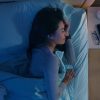Sleep Disorders
Americans are haunted by sleep disorders, with nearly 40 million suffering from some type of chronic sleep disturbance. There are many different types of sleep disorders, which can range from mild to debilitating.
Insomnia – Insomnia is defined as someone that cannot fall asleep or stay asleep when he/she has the opportunity to get a full night of sleep. Insomnia may include difficulty falling asleep, difficulty staying asleep or waking up too early. Insomnia can negatively affect someone’s work performance, damage relationships and even cause someone to make poor decisions. As many as 35% of Americans complain about suffering from some form of insomnia. It is more common among people under stress, those suffering from medical conditions, such as depression, older adults and women. There are two different types of insomnia – short-term insomnia and chronic insomnia. Short-term is brief, only lasting up to three months. This is present in about 20% of people. Chronic insomnia lasts more than three months and occurs at least three times per week. Chronic insomnia is present in about 10% of people.
- Short Sleeper Insomnia – Aside from short-term and long-term, there are different types of insomnia. One form is short sleeper insomnia. While most adults require seven or more hours of sleep nightly, a small number of adults are deemed short sleepers. They feel alert and refreshed sleeping fewer than six hours. This limited sleep duration is present in children and young adults. Short sleepers function normally and don’t require additional sleep. Research is exploring sleep genetics to learn more.
- Child Insomnia – Childhood insomnia occurs when children do not follow regular schedules and do not go to bed unless an adult forces them. When children do not have structured bedtimes, they may stay awake for hours every night. Children that have insomnia may greatly benefit from having enforced bedtimes and being restricted from eating or drinking right before bedtime.
- Hypersomnias – Hypersomnia is a type of sleep disorder that makes people excessively sleepy.
- Narcolepsy – This is a lifelong sleep disorder characterized by people feeling overwhelming tired and suddenly falling asleep while driving, eating or walking. There are two different types of Narcolepsy, which requires a doctor’s diagnosis. Estimates show that nearly one in 2,000 people have a form of narcolepsy.
- Idiopathic Hypersomnia – This is a type of narcolepsy that requires people to sleep 12 to 14 hours to function normally.
- Kleine-Levin Syndrome – This involves recurrent excessive sleepiness episodes, which may last as long as two days to five weeks with episodes recurring more than one time a year.
- Narcolepsy – This is a lifelong sleep disorder characterized by people feeling overwhelming tired and suddenly falling asleep while driving, eating or walking. There are two different types of Narcolepsy, which requires a doctor’s diagnosis. Estimates show that nearly one in 2,000 people have a form of narcolepsy.
- Insufficient Sleep Syndrome – This is a type of sleep deprivation that occurs when people fail to get enough sleep.
- Long Sleeper – Long sleepers may require more sleep than their peers. While they get a normal amount and good quantity of sleep, they are often tired.
Sleep-Related Breathing Disorders – If a sleep disorder causes difficulty breathing while someone is asleep, it is classified as a sleep-related breathing disorder. There are also several different types of disorders.
- Obstructive Sleep Apnea – This type of sleep apnea causes people to stop breathing while they are sleeping because their airway becomes obstructed. People that suffer from sleep apnea often snore loudly or make choking type noises because they are trying to breathe.
- Snoring – Snoring is caused when the flow of air vibrates the tissues in the back of the throat.
- Central Sleep Apnea – This form of sleep apnea causes the body to stop or decrease breathing in a type of on-and-off cycle. It is caused by problems in the heart or brain and not a blockage in the airway.
- Child Sleep Apnea – Estimates show that 2% of young children suffer from obstructive sleep apnea. This occurs mainly in preschoolers that have abnormally large tonsils and adenoids.
- Infant Sleep Apnea – This may develop in infants and be caused by a developmental problem, such as an immature brainstem or other medical condition.
- Sleep-Related Groaning – Known as catathrenia, this is when people make sounds that resemble groaning while exhaling in their sleep. This is a rare condition that occurs mostly in men.
Circadian Rhythm Sleep-Wake Disorders – These types of conditions occur when sleep times are not aligned, causing people not to follow normal sleeping times or patterns.
- Delayed Sleep-Wake Phase – This sleep pattern means someone is delayed by two or more hours. They typically go to bed two hours later and then sleep two hours later in the morning.
- Advanced Sleep-Wake Phase – This disorder causes people to go to sleep several hours before a normal bedtime and then rise several hours earlier.
- Irregular Sleep-Wake Rhythm – When someone’s sleep and wake patterns are unpredictable and disorganized, they may suffer from this irregular disorder. People that suffer from this condition may also take several frequent naps over a 24-hour period.
- Non-24-Hour Sleep-Wake Rhythm – This type of sleep disorder is known as Non-24 and causes someone’s sleep time to shift later and later each day gradually.
- Shift Work – This type of condition occurs when someone works a non-traditional shift schedule, such as a night shift. It can cause extreme fatigue and exhaustion.
- Jet Lag – When someone travels across multiple time zones and has difficulty adjusting, they could be suffering from jet lag.
There are other types of more extreme sleep disorders, such as parasomnias, which is when unwanted experiences or events occur when someone is sleeping, falling asleep or waking up. Additionally, sleep movement disorders cause conditions that make some people jerk or have muscle spasms.
If you or a loved ones suspect he/she might be suffering from a sleep disorder, it is best to schedule an appointment with a physician to undergo a routine medical exam or even participate in a sleep study. However, many studies have discovered that the use of electronic devices within one to two hours before bedtime inhibits the body’s ability to adjust, thus affecting the delicate Circadian Rhythm appropriately. Blue light from electronic devices is thought to disrupt this cycle in our bodies. Avoid electronics and wear blue light blocking glasses to help minimize some types of sleep-related disorders.
Find BluTech Near You





